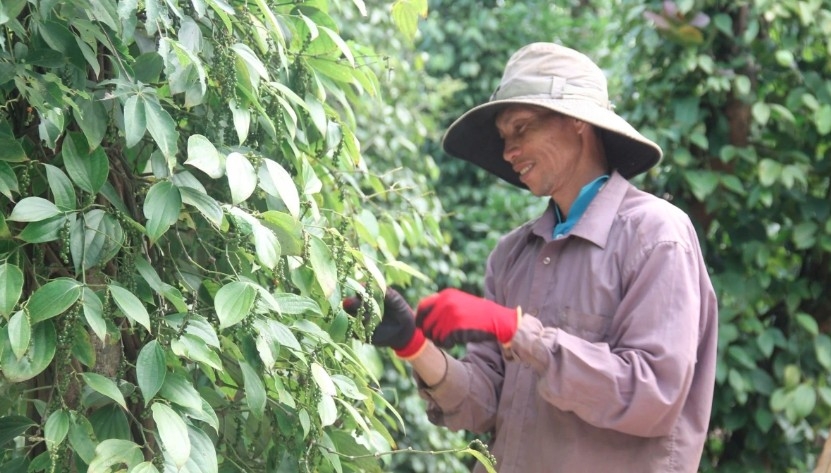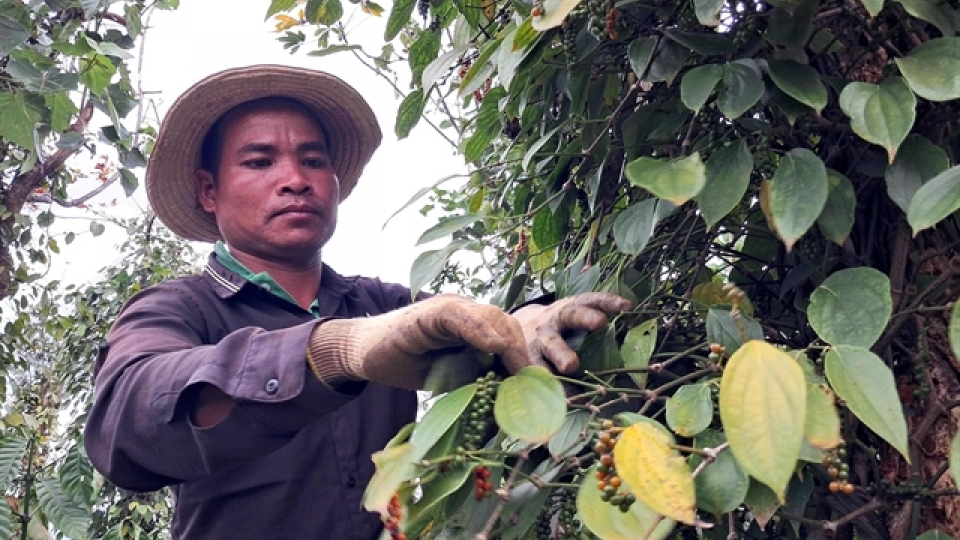Vietnamese pepper exports surge in value despite decline in volume
VOV.VN - Despite a nearly 13% drop in export volume compared to the same period in 2024, Vietnam’s pepper export revenue in the first half of 2025 saw a significant surge, driven by record-high export prices, the highest in many years, according to the Vietnam Pepper and Spice Association (VPSA).

By the end of June 2025, Vietnam had exported a total of 124,133 tonnes of pepper, including 105,939 tonnes of black pepper. Although the export volume decreased by 12.9% year on year, export turnover soared to US$850.5 million, marking a sharp increase of 34.1% compared to the first half of last year.
The key driver of this growth was the remarkable increase in export prices. The average export price of black pepper hit US$6,665 per tonne, up 93.6%, while white pepper fetched US$8,079 per tonne, up 63%. These are the highest prices recorded in years, reflecting a strong recovery in the global pepper market and improvements in quality and value-added processes within Vietnam’s supply chain.
The United States was Vietnam’s largest export market, accounting for 23.6% of the total volume, equivalent to 24,979 tonnes. Other key markets, including India (7,768 tonnes), the United Arab Emirates (7,700 tonnes), China (6,610 tonnes), and Germany (4,836 tonnes), maintained stable import volumes.
According to Lai Viet Anh, general secretary of VPSA, the global pepper market showed stable to slightly increasing consumption trends in the first half of 2025, despite a reduction in supply compared to 2024.
Pepper prices nearly doubled from the same period last year, encouraging some countries to expand cultivation. However, the impact of these expansions on global supply will not be felt for another 2–3 years, meaning current shortages are unlikely to be alleviated in the short term.
Anh expects a surge in demand from the US market moving into the fourth quarter of 2025 and early 2026, as importers begin restocking for the peak consumption season.
In China, while Vietnam’s pepper exports showed slight improvement in the first half, there has yet to be a major surge. Imports are expected to continue rising in the second half of the year but are unlikely to match the buying spree seen in 2023, partly due to strong price competition from Indonesia, whose pepper exports to China jumped over 100.7% in the first four months of the year.
In the context of global market uncertainties, from tariffs and geopolitics to seasonal consumption changes, international buyers are shifting toward a more controlled purchasing strategy. Instead of bulk buying, they now prefer smaller, regular, and more manageable orders to better control costs and inventory risks.




